The following "Top Ten" list is part of a series among members of the Gameological community. This list is a list of my Top Ten Moments from video games. If that sounds vague, that's the point! The below entries are just some of the excellent times I've had playing games over the last twenty-eight years. Keep your eyes peeled for other Gameological posts!
Honorable Mention: The Space Jump Boots, Metroid Prime
About three or four hours into Metroid Prime, Samus acquires the Space Jump Boots. This upgrade allows one to perform the most singularly video game-y action known to players…a double-jump. It’s a liberating move that makes scores of locations available for exploration.
I’ve said before that Metroid Prime was the game that melted my mind and laughed at me as my brain dripped out of my twelve year old ears. It was the first Metroidvania game I’d ever played and it is the single most influential piece of art I’ve ever consumed. But this moment was a bit too nebulous to make the list of moments because it wasn’t quite a moment, per se. It was far more indistinct than that.
Metroid Prime’s early game doesn’t play like a Metroidvania game, really. You start on the Frigate Orpheon, land on Tallon Overworld, progress to Chozo Ruins, delve into Magmoor Caverns, and emerge in Phendrana Drifts. When I was playing it for the first time, I perceived these as good old-fashioned “levels.” Things don’t really change until you get the Space Jump Boots.
These boots, you see, are in the same room where your ship lands at the beginning of the game. All that exploring, all that fighting, all that puzzle-solving…just to end up back here? This “moment” came and went, but it started the chain reaction that shattered my understanding of what games can be. So it’s not a self-contained moment, so much as the first push of a domino. No one’s favorite part of dominoes is “the first one,” but it’s also not “the last one,” “the middle one,” or “the one two-thirds of the way through.” They’re all connected, relying on one another, to create one joyous performance of gravity and plastic.
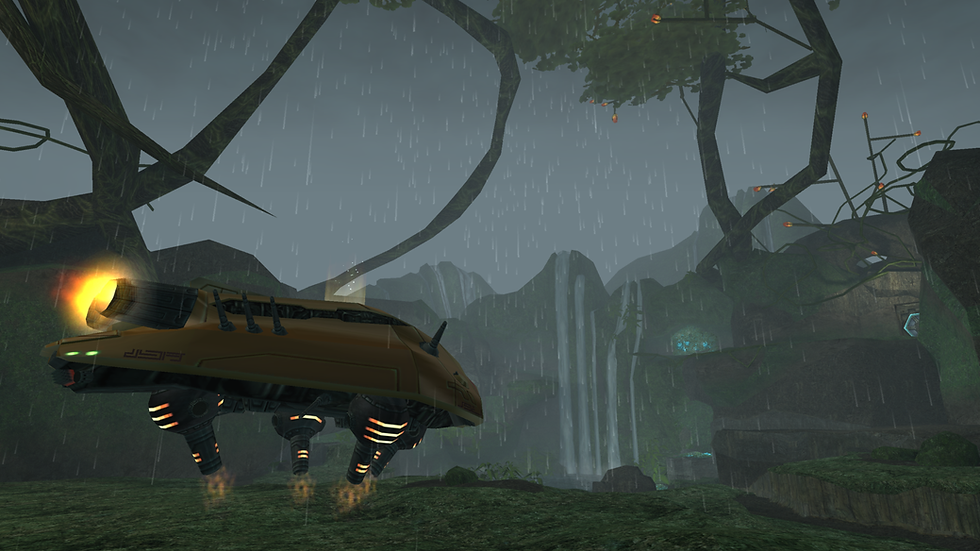
The Acquisition of the Space Jump Boots was the first step in an amazing, profound, defining experience for me, but it was not a singular moment. For that reason, it suffers the crushing blow of being merely an honorable mention.
#10: City Escape, Sonic Adventure 2
My first system was a Sega Genesis. I had a handful of games that were purchased for me because their boxes played well to befuddled shopping parents, mostly Disney titles, but by and large the system was a vehicle for Sonic the Hedgehog. I had every main title, plus a few spin-offs. My earliest memories of gaming are inextricably tied to Sonic the Hedgehog.
Shortly afterwards, my parents purchased a Nintendo 64 for me and we became a Nintendo household through and through. My attention had quickly diverted to Mario and his cohorts; Sonic was left behind. We put a lot hours into Super Mario 64, but because we had never played any 2D Nintendo games, the importance of Mario’s jump to 3D was lost on us. For us it was just “a newer game evolving as expected.”
Fast forward a few years more and the Nintendo Gamecube entered our living room. With it came better visuals, smoother gameplay, and a functionally perfect controller. It was at this point that Sega had unconditionally surrendered to Nintendo in the Console Wars and was now simply a software company. So when I learned that I could play the Sonic Mega Collection on my Gamecube, I was ecstatic. It was an instantaneous purchase.
My sister and I fell back into old habits in no time flat. We remembered all the levels, songs, and fast-paced visuals, but with a few more years of gaming under our belts, the Sonic games were also far more manageable. Sonic had retaken the throne.
Though released on the Dreamcast in June of 2001, it only took until February 2002 for a new title to be ported onto the Gamecube: Sonic Adventure 2. It was our first ever Day One purchase. We ran to the Gamecube, inserted the disk, and navigated our way through the menus asking us questions we cared not to answer. We just had to play a new Sonic game, preferences be damned!
Every Sonic game started in the exact same fashion: a colorful title card would boast the name of the level, and Sonic would hop into position, standing atop a reliably grassy landscape looking attentively to the right while bright chiptune music encouraged us. We were expected to take him to his goal, guiding him dutifully from left to right through the lush environment while hopping on whatever robo-creatures paced the hills in front of us. Surely, Sonic Adventure 2 would adhere to this time-honored tradition.
Sonic Adventure 2 does not adhere to this tradition.
Right off the bat, we see a fully-realized 3D helicopter announce over intercom that it has captured “the rogue hedgehog.” That fact barely reaches our ears before Sonic bursts out of chopper ready to escape, while the door falls forgotten to the sprawling city below. Sonic announces his plan to leave to the audience, rips a piece of metal off of the helicopter, and jumps down to the eagerly awaiting streets.
The words “City Escape” flash quickly across the screen, then disappear with the same haste with which they entered. In their stead we see Sonic the Hedgehog fall from the sky and land on the road. The camera whips behind him and control is now turned over to the player. We are now skateboarding through the middle of the road at a breakneck pace, rock music blasting through the speakers, as a cacophony of car horns and ring collections announce themselves just as recklessly.
I had never felt adrenaline like this before in my life.
This was a game changer. I had never really thought about the jump to 3D prior to this. Surely I had done it with Mario, but the guiding philosophies behind those games were very different. On top of that, I had no benchmark to compare against. I never knew what Mario was, only what Mario is. With Sonic, however, I had gone from playing a 16-bit sidescroller to a nearly brand-new 3D platformer overnight. It was the first time I had every really understood what a “generational leap” in technology actually meant.
In years since, Sonic Adventure 2’s warts have become more obvious and, while Mario is obviously the superior franchise in every meaningful way, the audacity of those opening minutes of City Escape have managed to stick with me all these years later.
#9: Return to Anor Londo, Dark Souls III
There is a lot of stuff out there. Movies, television shows, books, and games have been adding themselves to my backlog for years with no concern for me or my time. “Eventually,” I always told myself. I never knew if I believed it or if it was just a way to get people off my back whenever recommendations were slung my way.
I often remarked jokingly that there was too much content out there and that “they need to stop making things for a year so that everyone can catch up!” Perhaps some malevolent spirit out there listened to me. Perhaps 2020 is my fault, everyone.
Quarantine has been going strong for eight months now and, since this was my monkey’s paw wish come true, I figured I should at least hold up my end of the bargain. I’ve played thirty-eight games for the first time this year and I’m not slowing down. My backlog is dwindling.
Tucked away in that number are three games from FromSoft: Dark Souls II, Sekiro, and Dark Souls III. I had already completed Bloodborne last year and Dark Souls the year before that. While Bloodborne remains fresh in my head (as I am always kind of replaying it in the background when I have some time to kill), Dark Souls hasn’t been touched since I finished it almost two years ago. I didn’t especially love it when I played it, but I’m sure I’d have a better appreciation for it a second time around. Faint memories of Sen’s Fortress and Blighttown are reminders of the dark fantasy world that is just waiting to kick my ass a second time.
Playing three new FromSoft games, though, takes a toll on one’s mind. Twisting hallways and death animations consistently bombarding a player’s eyes can cause a general “blurification” of the games. Which game had that one boss? How did those stats work again? When did I find that one item? Sekiro is somewhat resistant to the muddling of gameplay, but the distinctive look and feel of FromSoft’s action-adventures don’t make it fully immune.
There are those little morsels that never fade, however.
I, for one, will never forget when the first Dark Souls asked me to run up a narrow buttress in Anor Londo while two colossal fucking assholes launch arrow after goddamn arrow at me from the ledge up ahead. It friggin’ sucks.
Upon slaying Pontiff Sulyvahn in Dark Souls III, we exit through a rear door in the cathedral and continue our quest through the sprawling courtyard we’ve been exploring for the past few hours. We climb some stairs, slaughter some undeads, dodge some swords, and poke around a few antechambers. It’s not too long until we find ourselves perched upon a windowsill overlooking a deep chasm. We realize the only way to our goal is to once again scale a narrow buttress. Fate, it would seem, is a poet, for up above we once again see two fucking assholes readying their bows.
Yes, this again.
We sigh dejectedly and press on. We climb, we dodge, we slay, and we hopefully do not die. The path ahead has some twists and turns in store for us, but the hard work is now over. All we need now is a bonfire where we can save.
We don’t find one though. Instead, we find a round room that looks awfully familiar. I’m pretty sure that’s a statue of Gwyn against that wall, no? The first Dark Souls had a statue just like that. And it was an illusion, if I recall, which means I swing my sword at this statue…
Swoosh!
The wall disappears expectantly, rewarding our memory. “You’ve been here before,” the game says to us. It’s different, but the same.
Outside this room is a giant elevator that corkscrews its way up and down. This definitely looks familiar. And as the winding elevator you are riding snaps neatly into place you step out, look up, and every last shred of doubt is erased. You prepare to say the words out loud, but the game beats you to it. They flash confidently across the screen.
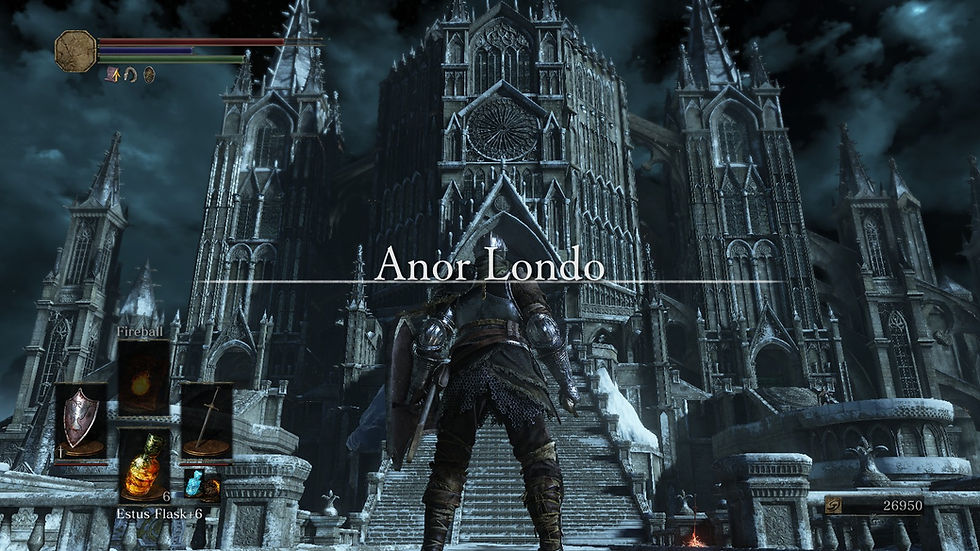
There was a bonfire waiting patiently by the staircase, but my desire to seek reprieve melted away. I wasn’t done playing now, how could I be? I had to explore! I had to see if my old friend the blacksmith was there! I had to look for the trusty bonfire with whom I had grown acquainted back in the day! Would I even be able to sneak into Gwynevere’s chamber?
Dark Souls III overall had the problem of feeling like “more of the same” for much of its playthrough. In a strange twist of irony, the portion of the map that was ripped straight from its predecessor felt like a wholly new experience. Some of these paths were the same, others were not! Rediscovering a location of which I had vague memories was a shot of pure adrenaline in a game that I was otherwise playing on cruise control.
I was also glad to see that the Ornstein and Smough room could be renamed simply “The Really Hard Boss Room.” Cause Aldritch sucks.
#8: Sans’s Judgement, Undertale
This is the moment that I’ll probably write the least about. The reason for this pretty simple, if you’ve played Undertale you know exactly what I’m talking about, and you haven’t played Undertale, I’m sure as hell not gonna spoil it for you.
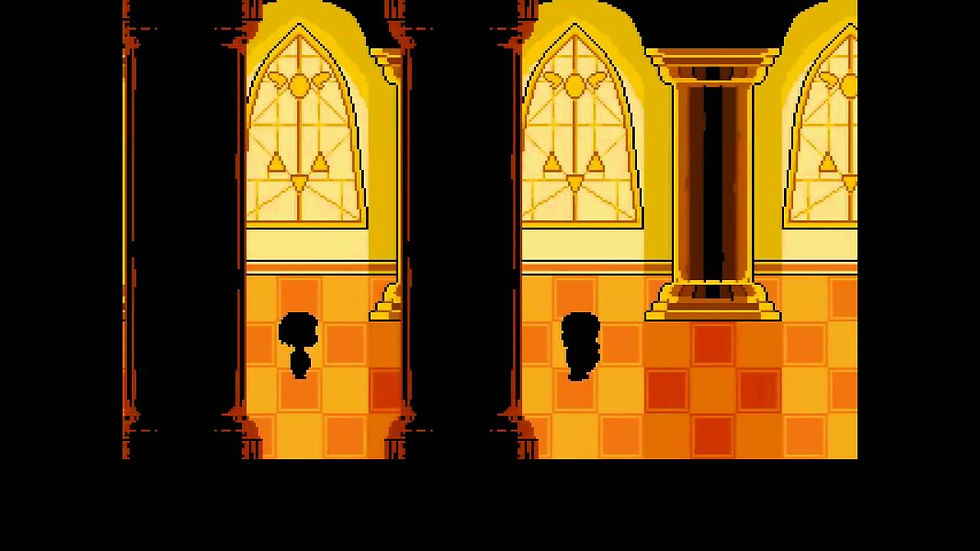
The short of it is: I fell into the game’s trap hook, line, and sinker. Every magnificent pitfall and piece of misdirection Toby Fox laid in my path worked perfectly. The judgement at the end of the game worked like a charm and it has haunted me ever since. I’ve even written previously about how this reveal has rewired the way I approach video games as a whole.
It’s a masterpiece of writing and game design that shows just how this medium can tell a story in ways nothing else can.
#7: The Wish of the Princess, Paper Mario
By time Paper Mario had found its way into my collection, I had already rescued my fair share of princesses. Heck, Princess Peach herself had been saved once or twice already. In each of those instances, however, those princesses never really felt like characters I wanted to save. My job was to save her because of course it was, it always is, that’s how stories work, right?
I had never really thought about the implications of this because a trope is a trope and, realistically, I was in it for the adventure. They could have just handed out some brownies at the end of the game and I’d have felt the same emotional high. So when Princess Peach kisses Mario on the nose at the end of Super Mario 64, it’s nice, but it’s also kind of “whatever.”
When I first saw the commercial for Paper Mario on television, I was excited. A new Mario adventure! I didn’t really understand the “paper” aspect of it, but I really didn’t care. I just wanted to play this weird new game.
Paper Mario was also the most story-heavy game I’d ever played up to that point. With a roster of party members, villages full of colorful characters, and daunting villains aplenty, I didn’t realize it at the time, but this was Baby’s First RPG.
Nintendo, never one to skimp out on gameplay, also made the adventure fun as all hell. With a turn-based battle system, clever ability mechanics, and a stripped-down leveling system, I was keeping up with the demands of the game and loving every minute of it.
At the end of each chapter, when Mario rescues a Star Spirit, our focus shifts to Princess Peach who is held captive in Bowser’s castle in the sky. In these segments, we’re treated to some light stealth gameplay where our princess sneaks through the castle looking for clues on where to find other Star Spirits. She has also teamed up with Twink, a baby star whose name wouldn't necessarily survive localization in in the year of our lord 2020.
Peach and Twink explore the dark hallways, find some intel, and Twink flies to the city below to tell Mario what the two have learned. From there, we, as Mario, take that information and use it to open up the next level. It’s great!
The finale of the game takes place on the roof of Bowser’s castle, miles in the sky. Bowser has Mario on the ropes and the power of the Star Rod has made Bowser invincible. Mario can’t win. At this point, the battle takes a quick time-out to focus on Princess Peach. She’s tied up and held off to the side by Kammy Koopa, Bowser’s trusted assistant. Suddenly, Twink comes to the rescue, bonks Kammy on the noggin, and unties Peach! Kammy gets up, turns to the two of them, and a battle starts.
We are now in the turn-based battle scenario, for the first time, as someone other than Mario. It’s a scripted fight, you can’t really lose, but when it starts, Twink is too small to hurt Kammy, but Kammy can hurt Twink. Peach’s only move, however, is to Wish. And as she wishes and prays for Twink, turn after turn, Kammy’s attacks do less and Twink’s attacks do more until, finally, Twink can’t be hurt by Kammy and the old hag is down for the count. We exit the battle and Twink tells Peach to wish again.
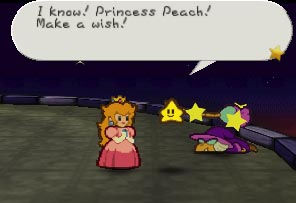
“I know! Princess Peach! Make a wish! Just like you did for me! Make a wish to give more power to the Star Spirits! Think of the Mushroom Kingdom, Star Haven, Mario.... Make a wish to the Stars, thinking of all those things! If your wish is strong enough, it will reach the Star Spirits and give them strength!”
Peach obliges and the music swells, the Star Spirits arrive and give Mario the power he needs to finish off Bowser once and for all. It’s an incredibly moving moment because, for the first time in a Mario game, Peach saves the day. In fact, Peach had been saving the day all along. Peach’s clues, her messages, her efforts…it all culminates in a beautiful finale for a character who had previously been nothing more than a prize.
It’s a moment that feels long overdue, but also incredibly earned. It only works because of the time we’d spent with Peach over the course of the game. This, ladies and gentlemen, is a goddamn finale.
#6: Make Contact, Bloodborne
Horror takes many shapes and that’s part of why I love it. It could be a man on the loose with a chainsaw or it could be aliens from the far reaches of space lurking just outside our peripheral understanding of existence. It’s hard to explain just why we love to explore the dark possibilities of the unknown, but goddamn do we love doing it.
Enter: Bloodborne. FromSoft’s nightmarish twist on the Souls formula is arguably their greatest release to date and, in my opinion, is a perfection of the marriage between game design and aesthetic theming. While the game is a horrific journey from start to finish, the forms these terrors take evolve slowly over time.
I had heard the game described as “Lovecrafian” long before I even owned a PS4. H.P. Lovecraft, an author whose works I enjoy, perfected “Cosmic Horror,” the idea that terror lies far beyond our understanding and our interaction therein would drive us mad. The human brain simply cannot comprehend the terrors that lie “out there.”
That’s not how Bloodborne plays, however. The nightmares we face are pretty down-to-earth. Plagues, beasts, and hunters…we’ve seen stories of these things all our lives. Sure, giant trolls and werewolves aren’t exactly friendly, but we can certainly wrap our brains around the idea that “a spider except BIGGER” is certainly scary.
So for the early hours of the game, we wander the worn-down Victorian streets of Yharnam, fighting our way through the traditional villains of old. Rabid dogs jump at us, angry goblins swing axes, and enlarged crows swoop from their perches in vain attempts to stop us in our tracks. We press on, deeper and deeper into the heart of Yharnam.
Along our way, it seems the citizens themselves have gone mad. Old maids in Hemwick, scholars in Byrgenwerth, and the priests of the Catherdral Ward…no one is of their right mind here. Just what has happened to this poor society?
Midway through the game, I found myself exploring an optional portion of the map. It’s protected by gates, both literal and figurative. I had to both unlock the door to this upper Cathedral AND fight my way through the brutal enemies awaiting my arrival. It was one of the most challenging stretches of the game yet. Finally, after clearing out a dark, abandoned church and the hallways surrounding it, I pushed open a grand set of doors. And my heart sank.
There were no enemies in this large room. Just one, lonesome corpse standing upright, arms positioned obediently, looking up to the sky. The room was aglow with intermittent stretches of fire and flame. As I approached, I learned this pose that he struck was simply called: Make Contact.
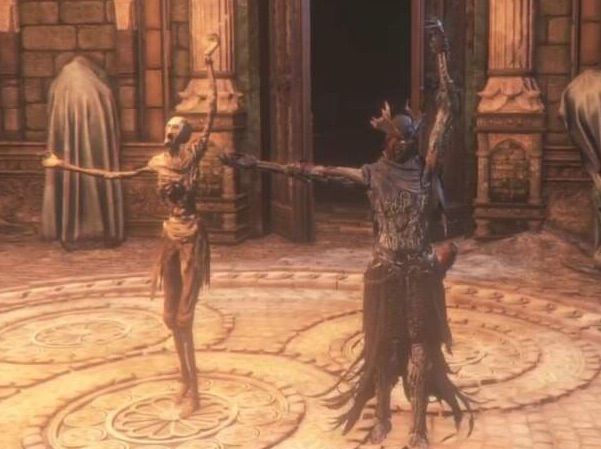
Goosebumps coated my arms. The hairs on my neck stood up. I began to sweat. Something here was wrong. I felt like I was trespassing. I need to turn back. I am not ready to see what this man had seen. Whatever was beyond this threshold was unlike any creature I had previously encountered.
But I didn’t turn back. I had to know. I knew the way forward contained horrors of the unknown. This was an optional area, I could retreat! But the allure of abyssal curiosity was too great. I couldn’t stop now.
It was at this moment that Bloodborne transformed from a “traditional” horror experience to one of Lovecraftian proportions. Behind me were Earthly Terrors, but ahead of me were Cosmic Horrors. I have never, in my life, felt so viscerally appalled by such a simple sight while simultaneously mesmerized by dreadful possibility.
I love being terrified by Bloodborne.
#5: Point Insertion, Half-Life 2
Growing up as “a Nintendo kid,” the only thing our family computer could really handle were some basic low-power games like Roller Coaster Tycoon and Red Alert 2. It wasn’t until high school, when I got my own laptop, that I started to dip my toes into the wide array of PC games. First-person shooters never were my genre of choice, having only ever played console editions of Medal of Honor games, but I figured I’d give the fabled Half-Life series a whirl. The fact that it was dirt cheap on Steam really helped.
I played the first game, a decade old at that point, and was surprised at how well it held up. Sure, the graphics were blocky, but I had replayed enough N64 games to be unfazed by this. The buttery smooth controls and excellent tension-and-release equilibrium brought on by perfectly balanced combat and exploration made it a wonderful experience (at least up until the famously half-baked finale).
While Half-Life stuck with me as a masterclass in design, the world wasn’t particularly enthralling. I’d seen twisting metal corridors and waves of bullet-fodder enemies before, so it felt merely “good” in that respect. They gave me enough story to justify the action, but it was nothing to write home about. The aspect of the game that stuck with me the most was the strange man in a suit who would show up now and again.
A few months later, I downloaded the acclaimed sequel, hoping to get some more of that gameplay that made the first title so much fun. I didn’t really care about the story; Gordon Freeman’s exploits just needed to be a vehicle for delivering top-notch levels and controls. While that desire would be met, something else happened first. Half-Life 2 begins with a haunting and lonesome introduction into a world that would forever remain close to my heart.
I stepped off the train upon which I’d started the game and found myself in a run-down, but functional train station. It was forlorn, but not abandoned. Quiet, but not silent. A drone flew to my head, snapped a picture of me, and moved on. A large screen in the distance introduced me to City 17, but it was clear that this was not a warm welcome to a wonderful metropolis.
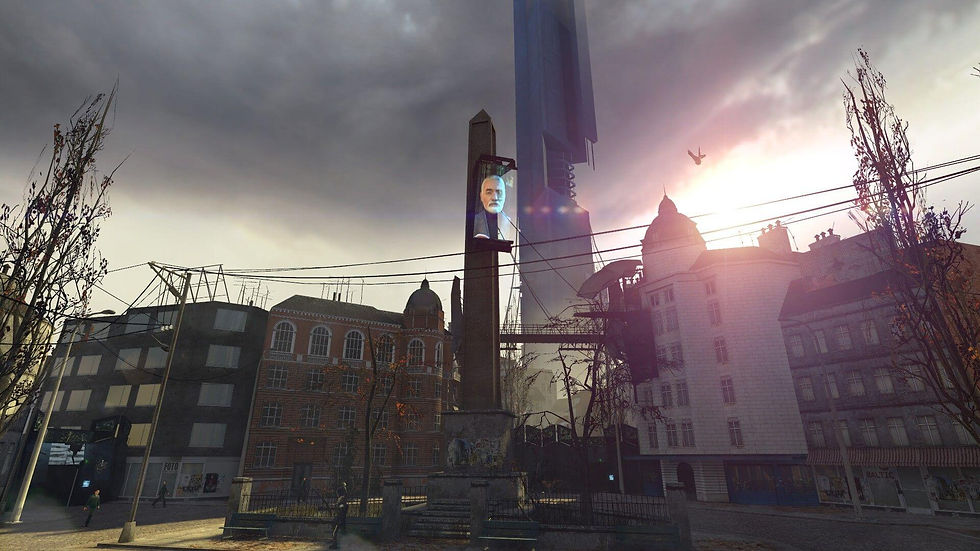
Armed guards in mysterious masks held checkpoints while civilians in numbered suits were patted down and pushed through gates for inspection. Onlookers called out to me, asking if anyone else was on the train. Were they looking for a husband? A brother?
I was escorted by a guard down a long hallway. In rooms that I passed, brutal interrogations were left to the imagination as these fascist forces closed eyeholes to ensure their privacy. While the guard who escorted me revealed himself to be a resistance leader, it was clear that the fight was become more trivial by the day. He told me to run and meet up with a former cohort from Black Mesa. I just had to make it through the city.
He pushed me through the door and I was provoked by soldiers, called Combine, who taunted me into picking up their trash. Eventually I passed through the doorways that led to the city’s central plaza. More, drones buzzed about, a few people wandered aimlessly around, but my attention was immediately drawn to the massive skyscraper that loomed in the distance. The houses around were older, made of brick and stone, but this behemoth in the distance stood in stark contrast. A hulking tower of metal and wire, it was clear to me that this ominous figure was the cancer that plagued this ailing urban center.
Walking through the streets, I felt inconsequential. Insignificant. The Combine and their war machines seemed indifferent to me. Who was I but another lowly ant in their colony? I didn’t matter to them, so long as I marched in line and followed orders. I was powerless in this world, I was beyond an underdog, and I was ready for the fight of my life.
#4: Shoot the Moon, Portal 2
Here’s an unpopular opinion, maybe: I like Portal 2 more than Portal. I actually have no idea how unpopular that is, but the general consensus I seem to find online is that the first game is a short, sweet, perfect experience. No fat can be trimmed from Portal. Its successor, by contrast, has quite a bit. It's a standalone title, after all, rather than a bundled mini-game. Besides portals, the player must also contend with light bridges, gravity beams, and multicolored goop.
The biggest difference between the two games, though, is the heavy emphasis on story in Portal 2. Gone are the days of “Test. Also something nefarious? Escape!” We now have a cast of fully realized characters, heel turns, uneasy alliances, and so on. Given how much I love minimalism, surely I must hate this unnecessary plotification of the sequel, no?
No.
Valve’s approach to story usually hits me just right. In this case, listening our characters encourage, goad, chastise, and open up to Chell during our misadventure is the perfect sprinkling of narrative elements to entertain without intruding. These sprinkles, however, are not without reward. Every little throwaway joke has a payoff, whether it’s Chell being “adopted,” Caroline being heir apparent to Aperture Science, and even that moon rocks make for excellent portal-conducting surfaces.
So we’re here at the end of the game. Aperture Science is minutes away from collapsing, the room is on fire, GLaDOS is stuck in a potato, and Wheatley has pulled off one successful trap. You’re lying on the floor as the last bit of hope washes away. You look up at your enemy, who acknowledges he has no idea how to fix the facility, when the roof caves in.
And, honestly, just watch it for yourself.
The culmination of every insignificant gag throughout the game is laid out before you. The stalemate button, Caroline, the moon…even your faithful Companion Cube makes a comeback. It’s one of those endings that isn’t just satisfying, it’s impressive. Your brain sparks with memory as you’re reminded of all those little things from earlier. And it makes you want to play the game again. Clearly these guys knew exactly what they were doing. How many more little nuggets did you miss out on the first time?
And that’s what I did. I replayed it. Over and over. 60 friggin’ hours! It’s a puzzle game, I’ve memorized all of the puzzles, but I can’t stop playing it simply because I’m constantly in awe of the expert presentation of every little detail. Valve used every tool in its toolbelt when assembling this game and never once was my immersion broken. I will never tire of Portal 2.
#3: Dry Dry Ruins Unearthed, Paper Mario
Holy shit, a second Paper Mario entry? That’s right! While our previous point addresses the internal narrative machinations of Nintendo’s wonderful little RPG, there exists another major facet of gaming; a facet that has evolved and grown to take many shapes over the years. This facet, put ambiguously, is simply the “external” narrative functions.
The Prologue of Paper Mario holds your hand every step of the way. Nintendo sought to ensure that the turn-based battles, the leveling up, the badges, the partners…all of it was crystal clear to the player. Though it does feel overlong now, I can’t say it was the wrong decision, especially for children like me who were fortunate enough to have Paper Mario exist as their first RPG.
Chapter One, likewise, is a masterclass in slowly taking off training wheels. The chapter is incredibly straightforward. It’s hard to ask yourself “Where do I go now?” when your only option, really, is “to the right.” The game slowly lets go of you, allowing you to explore the Koopa Bros. Fortress. And while you do do a fair bit of investigation, there isn’t much heavy problem solving to it. You find a key, you unlock a door, rinse, repeat. The chapter culminates with a stylish, but simple, battle. It’s got just enough combative pizzazz to it to make you feel accomplished, but losing the battle is actually kind of hard.
Upon rescuing this first Star Spirit at the end of the chapter, Mario and friends head off to the next area of the game: Dry Dry Desert. The title of the chapter, “The Mystery of Dry Dry Ruins,” teases intrigue and adventure. This’ll be Mario meets Indiana Jones!
We learn early on that the ruins are somewhere in the desert, lost to time. Surely we can find them, though. After all, we’re the protagonist! The problem, however, is that it’s really easy to get lost in the desert. That’s by design, too. The desert is a massive grid with very few landmarks and enemies aplenty. Even the errant sandstorm can appear to blow Mario to another section of the map, adding to the confusion.
Where do I go now?
Nowadays, we answer that question by consulting a guide. There are an abundance of websites devoted to helping players nab every collectable and see every sight. “Completionism” exists as an alternative to merely “beating a game.” So when we get lost, we get answers.
But when a game is first released, those answers might not be readily available online. And when you’re a third grader in the year 2001, you may not even know where to look online. And when you still had dial up internet, you may not have been allowed online because your mom was expecting a phone call and you couldn’t make calls and browse the web at the same time. Where do you get answers now?
Why, the auspicious playground, of course!
“I heard that you have to buy a dusty hammer and a dried shroom!” “I heard you need to run in circles around a palm tree!” “I heard you have to find Moustafa and he tells you!” “I heard there is genie who will cast a spell on you!” “I heard you need to find a lime, because that is Moustafa’s favorite fruit!” “My uncle works at Nintendo and he said you need to press every button in alphabetical order!”
Sharing of information (and filtering out disinformation) was the way to play when you were a kid. Every day you’d arrive at school, diligently explaining to your classmates what you had discovered, what you’d tried, and what you were hoping to do next. You were playing the game by yourself, together.
It took my friends and I several days, but we eventually figured it out. We bought items in a specific order, bribed Moustafa with his choice citrus, and received a key item that would escort us through the desert. When the little guiding rock in our inventory told us we had arrived, all we found was a humble little stone in the middle of the desert. It was a stone we had probably passed a dozen times between us. But now we knew it to be a lock, and the gem we held was our key.
The succeeding cutscene was the most amazing cinematic that the Nintendo 64 could muster. Swirling winds, trembling rock, and a grand castle of stone and sand lifted from under our feet. The staircase unfolded and beckoned us inside, even as the carvings on the outside of the ruins warned of the dangers within. We had found the ruins.
We had found the ruins.
The next day, my friends and I told tales of progress yet again. I had figured it out! So had Zach! Ethan was ready to try! Harrison too!
Paper Mario’s story is contained in its modest plastic cartridge, but the adventure is so much larger. Friends solving problems as one, working independently but towards a common goal, digesting the narrative in piecemeal fashion but assembling it together…this is a joy that only games can produce. The excavation of Dry Dry Ruins forged many schoolyard friendships, several of which last to this day. Thank you, Paper Mario.
#2: The Metroid Breaks Free, Metroid Prime
We’ve made it all the way to our second entry and, yes, it’s Metroid Prime. There was always going to be a Metroid Prime entry. Forget not that this list was still written by me. This list could have been ten Metroid Primes entries, so be glad I exercised restraint.
It’s worth noting here, before we move on, that Metroid Prime was my first Metroid game. The only familiarity I had with any aspect of the series prior to this was that Samus was a lady in a cool robot suit and she, at one point, visited a planet with lava on it. This was all thanks to Super Smash Bros. It was because of this arm’s length relationship to the franchise’s lore that meant I had to learn what everything was for the first time.
I didn’t even know what a Metroid was.
I also didn’t know that the game had its fair share of horror in its DNA. When you look at the back of the box, especially with no real understanding of its history, you would think it’s a First Person Shooter. That’s what I thought, after all.
So as the hallways tightened, darkened, and twisted around me, the tone of Metroid Prime began to sink in. This was going to be an experience unlike any other. My two favorite genres, sci-fi and horror, merged into something greater than the sum of their parts. Yes, it was sci-fi horror. I’d seen that before in Ridley Scott’s Alien. What I wasn’t prepared for was the profound sense of isolation; the remarkable sadness written into the ruins. There was terror, sure, but the consequences of those terrors were etched into the world I was exploring. There was fear in giant monsters, but there was also fear in no giant monsters.
Then, there was both.
About halfway through my adventure, I was trespassing through a frozen research lab in the edges of Phendrana Drifts. The Space Pirates had a thermal visor that I needed to see in the dark. I had fought wave after wave of pirates and I was getting pretty good at it. These insectoid soldiers had nothing on me.
Along the way, I was scanning the enemy’s computers for any bits of lore I could find. I heard tell of test subjects and quarantined corridors. I read of failed experiments and halted plans. What fresh hell could these Space Pirates be cooking up?
The quest continued until I entered another large chamber. Here, however, I found no Pirates. Where are they? Have they left? Are they hiding? Or are they dead?
In the center of the room stands a large containment unit…with a floating jellyfish inside. It looks otherworldly…a bulbous translucent head supporting long teeth that dangle below. Unsure of this specimen, I opened up my scan visor and gave the creature a quick once-over. I learned that this was the titular Metroid. It’s a parasite, and an aggressive one at that, who will latch onto their prey and suck the energy out, growing in size until the host is dead.
And the minute you close your scan log, the fucking thing breaks loose.
I wasn’t ready for this. I was scrambling to find it (the little sucker was fast)! I locked on to it, but it had latched on to me! I rolled into a ball and dropped a bomb, which shook the little guy, but I had to spin around and unleash hell. It darted left and right, as did I, and eventually I killed it.
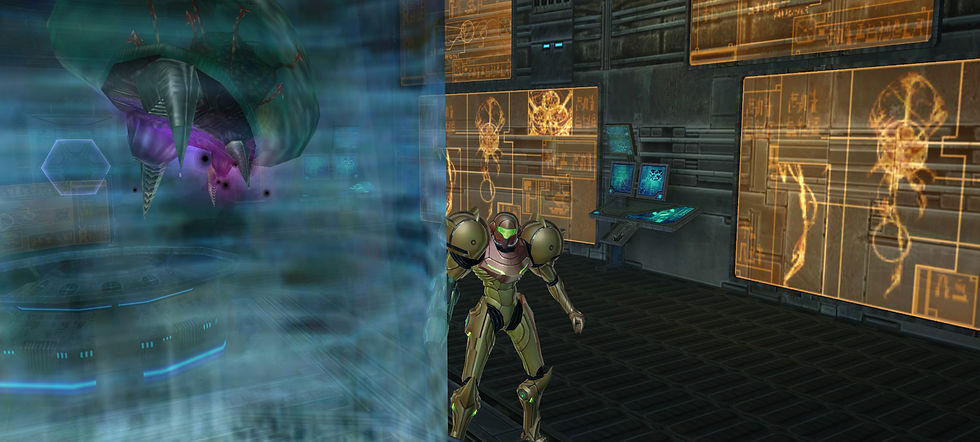
It was harrowing. I was shaken up. I couldn’t stop playing.
We all know how this turned out. It’s my favorite game of all time and it’s not even close. Prime’s way of oscillating between excitement and exploration, of teasing the player with just enough action to be on their toes, of inspiring wonder and horror and curiosity all at once…it’s just so fucking good. This single enemy encapsulates why the tone of Metroid Prime has never released its grip on my brain nearly twenty years later. It’s simultaneously restrained and unhinged, it’s a shot across the bow of your comfort zone while consistently being fun.
The tone of the game, encapsulated by this moment, plus the gradual introduction of the structure as discussed in my Honorable Mention above, explains why this is my absolute favorite game of all time. It is not simply the distillation of “my favorite things,” it is the crystallization of them. It’s the perfect, shining, beautiful gem that can only be created by both expert craftsmanship and sheer forces of fucking nature. Metroid Prime is a goddamn masterpiece.
#1: The Strider Fight, Half-Life 2
And thus, we return to City 17. When we left, The Resistance was on its last legs. Evacuation was our best bet. The Combine were cracking down. Gordon Freeman appeared, seemingly out of nowhere. Could he really turn the tide?
Well, if you know how stories work, you know that this is the case. The Resistance is on the offensive. It’s a full scale assault on the Citadel to rescue Eli Vance and liberate City 17. Our heroes’ strategy revolves around breaking into City Hall, a building that the Combine have repurposed to house a device that suppresses communication among civilians. As you advance through the building, you disable the generators powering the device.
As this mission reaches its climax, you find yourself on the roof of City Hall. The player engages in a shootout with some footsoldiers while an airship provides cover fire for the Combine. It’s a daunting challenge, but we’re up to the task. While this is going on, we can hear the harsh sounds of artillery at ground level. These weapons aren’t aimed at us, though. It’s just an unrelated battle between Combine and Resistance.
When the roof is cleared out, we descend a staircase on the side of the building and find ourselves in a courtyard down below. It’s here...my absolute favorite moment in video game history.
We are tasked with merely crossing the courtyard. Just get to the other side, how hard could that be? Well, that courtyard is ground zero for that battle we heard earlier. Giant Combine tripods, called Striders, are fighting the Resistance members in front of us. It’s an unrelated battle that we are now thrown into headfirst.
Running underfoot of these giant machines, looking desperately for cover, gunfire blasting from all sides…this is a moment of pure chaos. Gordon merely needs to get to the other side. It is pure perfection.
Let’s talk about “set pieces.” While it literally refers to any self-contained section of a visual story, it has evolved a bit to mean a “singularly memorable scene or moment.” We think of epic battles or CGI explosions. We think of Indiana Jones and Lord of the Rings. That big moment at the end of Avengers is certainly climatic and exciting, but one can’t deny the manufactured feeling these set pieces effuse. Of course it all comes down to this…it always was. We’ve known that this was how it was going to end.
There are other set pieces, though. I think of my favorite example from film, The Battle of Hoth from The Empire Strikes Back. Do I like because it’s bombastic? Do I like it because it’s shot well? Do I like it because apparently I have a thing for big walking machines?
No, I like it because it’s incidental.
The Empire does not attack Hoth because our hero, Luke, is there. Nor does Luke save the day. It’s the intersection between a villain with a goal unrelated to our protagonists and their goals. The Empire wants to destroy the Rebel Alliance. Had Luke been absent, the assault still would have occurred. Likewise, Luke does not turn the tide of the fight. In fact, no Rebel does. The Empire successfully destroys the shield generator and invades the planet…our heroes escape by the skin of their teeth.
This battle feels like happenstance, not destiny. Luke is not our hero because the battle happened “to him,” he’s a hero because he chose to engage with the battle voluntarily. This set piece does is not the consequence of our hero’s existence, it is a consequence of a larger story. It’s a consequence a world that is happening around our hero.
The Strider Battle speaks to me for the same reason. The Striders aren’t there to kill me; they are there to crush the Resistance. The insurgent actions of my comrades were not at my command. I did not bring about this fight, nor will I end it. I’m just here for it, and I choose to engage because that’s what needs to happen.
Half-Life 2 doesn’t tell me I’m a hero. It lets me choose to be one.


Comentarios